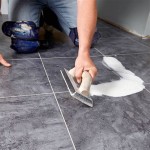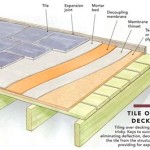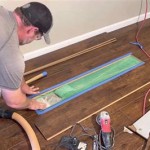Creating a Seamless Transition Between Hardwood Floors
Hardwood floors are a beautiful and durable flooring option that can add value and elegance to any home. However, if you're installing hardwood floors in a space that already has existing flooring, you'll need to create a seamless transition between the two surfaces.
There are a few different ways to create a seamless transition between hardwood floors, and the best method will depend on the specific materials and layout of your space. Here are a few of the most common methods:
- T-molding: T-molding is a thin strip of metal or wood that is used to cover the joint between two different flooring materials. It is typically installed using nails or screws, and it can be stained or painted to match the color of your hardwood floors.
- Reducer: A reducer is a type of transition strip that is used to connect two flooring materials that are different heights. It is typically made of metal or wood, and it is installed using nails or screws. Reducers can be found in a variety of colors and finishes, so you can choose one that matches the style of your home.
- Stair nosing: Stair nosing is a type of transition strip that is used to cover the edge of a stair tread. It is typically made of metal or wood, and it is installed using nails or screws. Stair nosing can be found in a variety of colors and finishes, so you can choose one that matches the style of your home.
In addition to choosing the right transition strip, you'll also need to make sure that the subfloor is properly prepared before installing the hardwood floors. The subfloor should be level and smooth, and it should be free of any nails or screws. If the subfloor is not properly prepared, the hardwood floors may not install properly, and they may be more likely to warp or buckle over time.
Here are the steps on how to install a seamless transition between hardwood floors:
- Prepare the subfloor by making sure that it is level and smooth, and that it is free of any nails or screws.
- Choose the right transition strip for your space. Consider factors such as the type of flooring, the height difference between the two flooring materials, and the style of your home.
- Install the transition strip according to the manufacturer's instructions. Be sure to use nails or screws that are long enough to penetrate the subfloor.
- If you are installing a T-molding, be sure to miter the ends of the molding so that they fit together snugly.
Once you have installed the transition strip, you can install the hardwood floors according to the manufacturer's instructions. Be sure to leave a small gap between the hardwood floors and the transition strip to allow for expansion and contraction.
By following these steps, you can create a seamless transition between hardwood floors that will add beauty and value to your home.

How To Transition Between Two Diffe Wood Floors

How To Transition Between Floor Surfaces Heavenly Heat

Guide To Flooring Transitions

How To Transition Between Two Diffe Wood Floors Amazing Home Decor

How To Transition Between Two Diffe Floors Flooring

Your Guide To Stunning Floor Transitions Next Day Floors

Hardwood To Tile Transition How Make The

Transitioning Wood Floors Smoothly From Room To T G Flooring

Can I Blend New Hardwood Floors With Old

How To Transition Flooring Best Floor Transitions 50
See Also







